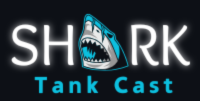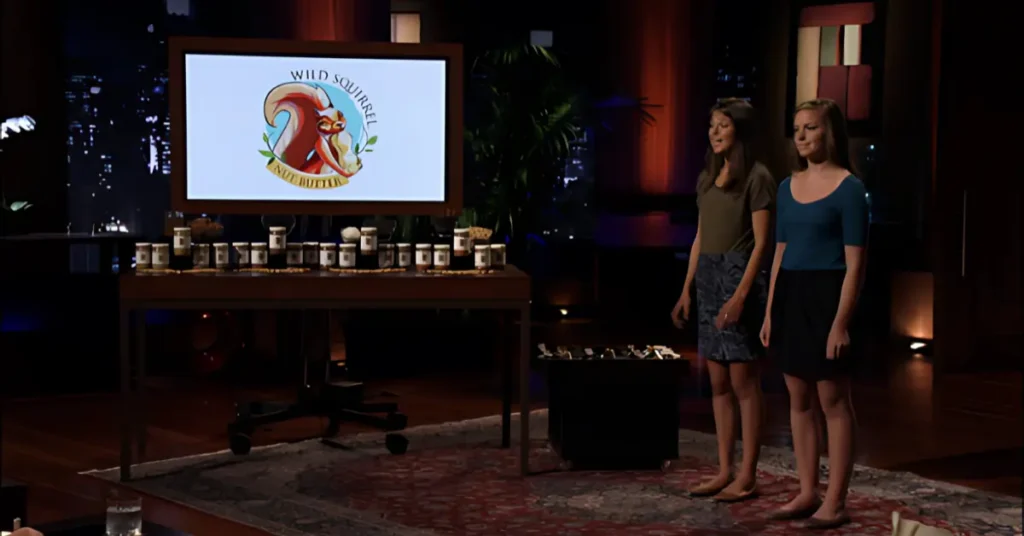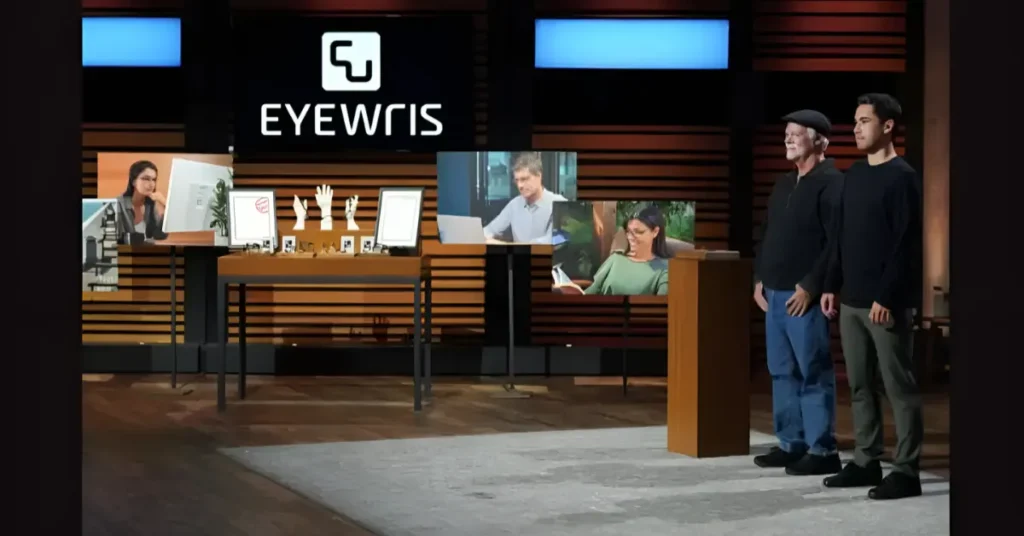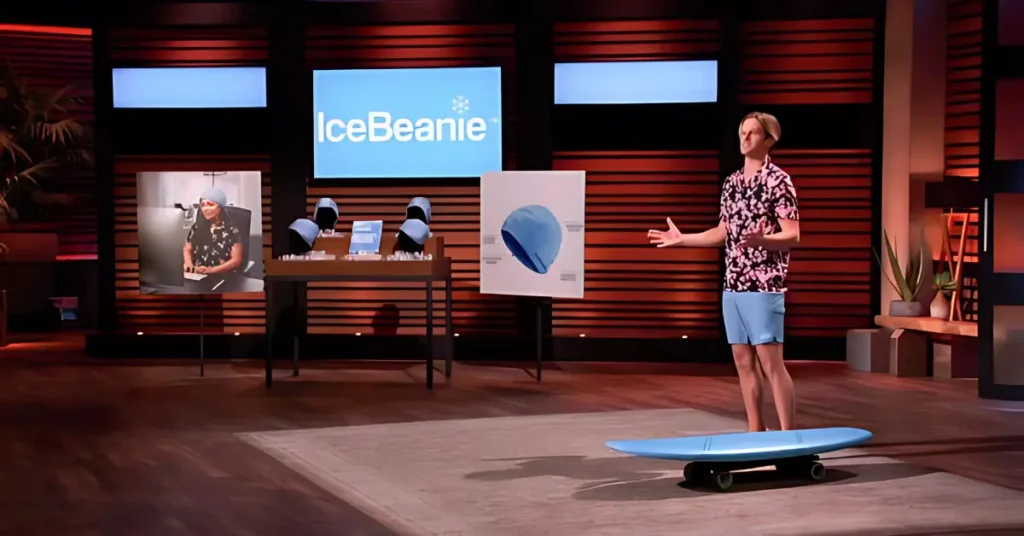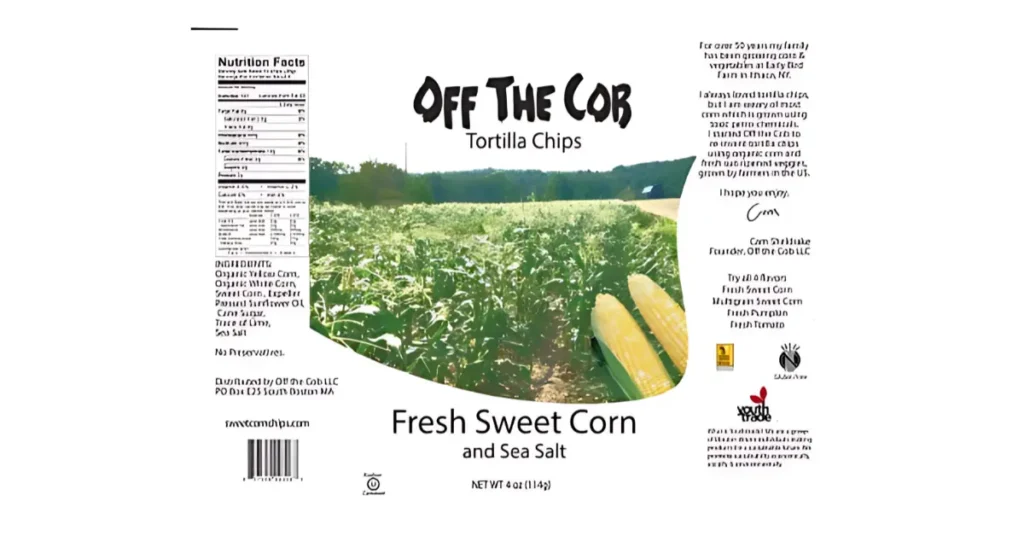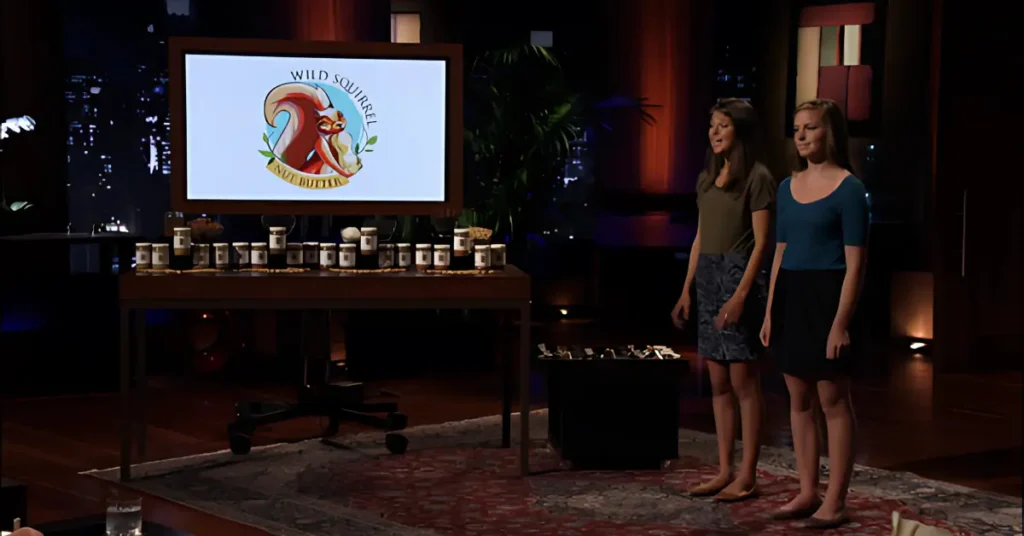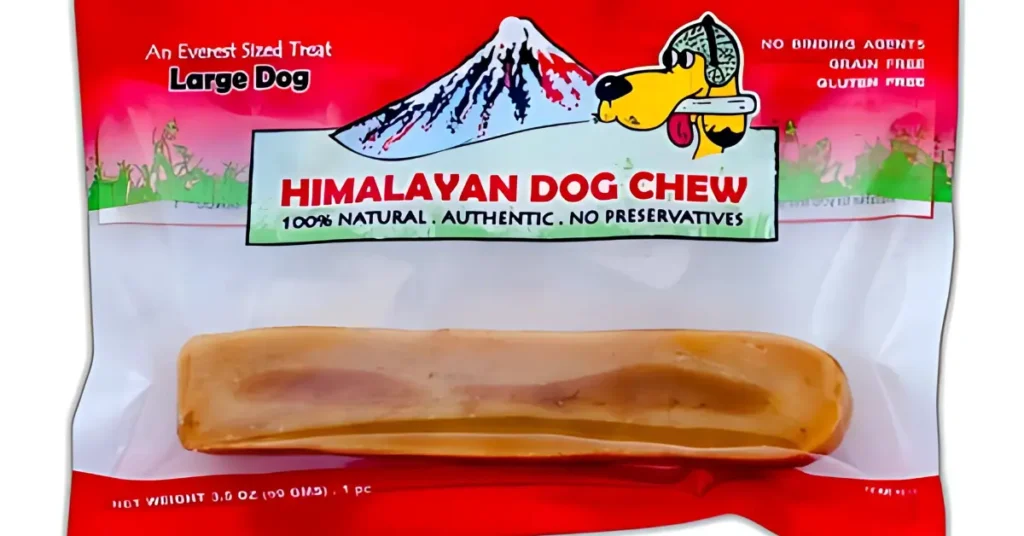Abe Geary, the inventive mind behind PetPaint, appeared on Shark Tank Season 5 with a bold vision: to let pet owners add a splash of color to their dogs using a veterinarian-tested, non-toxic hairspray. Designed to work with fun stencil kits, PetPaint was created to transform everyday pet care into a festive experience—whether for holidays, parades, or special occasions.
Despite the Sharks voicing concerns over the product’s novelty, its pricing, and a significant inventory investment, Abe absorbed their critiques and shifted his focus. Instead of relying on a traditional retail pitch, he leveraged online platforms and smart marketing strategies, eventually landing deals with major retailers like PetSmart. Today, PetPaint isn’t just a novelty; it’s a versatile tool used for celebrations and even in animal rescue operations, where shelters mark animals to indicate they’ve been spayed or neutered. With over $5 million in lifetime sales as of April 2023, PetPaint’s journey proves that innovation and resilience can turn a seemingly niche idea into a widespread success.
Table of Contents
ToggleNet Worth PetPaint Shark Tank
While an official valuation of PetPaint remains undisclosed, the brand’s impressive track record—evidenced by over $5 million in lifetime sales and strategic national retail partnerships—suggests a robust financial standing. Industry experts infer that with continued growth in both online and retail channels, PetPaint’s overall net worth could be significantly higher than its current sales figures indicate. This strong financial performance not only validates Abe Geary’s innovative approach but also positions PetPaint as a promising contender in the expanding pet products market.
Key Takeaways
- Resilient Innovation: Abe Geary’s journey with PetPaint highlights how taking constructive criticism—from Shark Tank’s panel—can transform a novel product into a market success.
- Product Evolution: Originally pitched as a festive, novelty item, PetPaint evolved into a versatile product used for celebrations, parades, and even in animal shelters and rescue operations.
- Digital-First Strategy: Pivoting from a traditional retail approach to an online-first, social media-driven marketing strategy was pivotal in expanding PetPaint’s reach and consumer engagement.
- Strategic Retail Breakthroughs: Key partnerships, including a significant test order from PetSmart, validated the product’s market potential and helped drive its growth to over $5 million in lifetime sales.
- Industry Impact: PetPaint’s success underscores the broader trend of personalization in pet products and demonstrates the importance of agility, innovation, and resilience in overcoming initial setbacks.
Highlights
- Innovative Product Concept:
PetPaint’s unique offering—a safe, non-toxic colored spray for dogs enhanced with stencil kits—demonstrates how creativity can lead to market differentiation. - Resilience in the Face of Criticism:
Despite receiving harsh critiques from some of the most successful entrepreneurs on Shark Tank, Abe Geary used the feedback as an opportunity to refine his strategy rather than retreat. - Effective Use of Digital Marketing:
Shifting focus from traditional retail to online platforms allowed PetPaint to rapidly expand its market reach. The company leveraged social media and e-commerce to build a loyal customer base. - Diverse Applications Beyond Celebrations:
The unexpected adoption of PetPaint by animal shelters and rescue operations not only broadened its market but also highlighted the product’s versatility. - Strategic Partnerships as Catalysts for Growth:
Securing a test order from a major retailer like PetSmart provided the credibility and financial boost needed to propel PetPaint into a national market.
Overview
| Category | Details |
|---|---|
| Name | PetPaint |
| Founder | Abe Geary |
| Industry | Pet Products |
| Product | Colored hairspray for dogs with stencil kits |
| Funding | $200,000 ask for 20% equity (no deal reached) |
| Investment Ask | $200,000 |
| Equity Offered | 20% |
| Valuation | TBD |
The Shark Tank Pitch: A Critical Moment
When PetPaint appeared on Shark Tank Season 5, Abe Geary was asking for a $200,000 investment in exchange for 20% equity. On stage, he showcased his product by demonstrating its capabilities on several dogs, including a bull-dog painted in the colors of Mark Cuban’s basketball team. The pitch was energetic, with Geary emphasizing his desire to revolutionize the way people celebrate their pets.
However, the Sharks were not entirely convinced. Their primary concerns centered around three key areas:
- Novelty Versus Practicality:
The Sharks questioned whether a product primarily associated with celebrations and holidays could sustain long-term consumer interest. They worried that PetPaint might be too niche, appealing only during special occasions rather than as an everyday product. - Inventory and Cash Flow:
With $200,000 already tied up in inventory, the product faced a significant challenge. Lori Greiner pointed out that holding such a large amount of unsold inventory could strain cash flow and impede growth, especially if the product did not move quickly in the market. - Retail Strategy:
Mark Cuban was skeptical of the planned retail strategy, suggesting instead that PetPaint should leverage social media and online channels. His comment—“It’s so easy and so obvious, that it scares me that you couldn’t see that”—highlighted the need for a modern, agile approach to marketing.
Ultimately, Barbara Corcoran came forward with an offer, albeit with a steep price: she would provide the $200,000 funding but in return, she wanted 60% of the company. This offer was far from what Geary envisioned, and he ultimately turned it down, leaving the Tank without a formal deal.
Critical Feedback: Learning from the Sharks
Despite not securing an investment on-air, the feedback Geary received was invaluable. Here’s a closer look at the points raised by the Sharks and how they influenced the next steps:
Novelty vs. Longevity
The Sharks were divided over the product’s long-term appeal. Barbara Corcoran expressed doubts about its price point—cans retailing at $9.99 might not capture enough recurring business if the product is seen solely as a novelty. In contrast, Kevin O’Leary and Mark Cuban suggested that spray-on color was not a proprietary concept, implying that the market could quickly become saturated with similar products.
Inventory and Operational Efficiency
Lori Greiner’s concern about the $200,000 tied up in inventory was a wake-up call. Efficient inventory management and robust cash flow are critical to scaling any business, particularly for a product that may experience fluctuating demand. Geary recognized that reducing overhead and streamlining operations would be crucial for sustainable growth.
Embracing Digital Marketing
Perhaps the most transformative advice came from Mark Cuban and Robert Herjavec, both of whom emphasized the importance of digital marketing and social media. Cuban’s point was clear: in today’s market, a strong online presence is not optional—it’s essential. Traditional retail strategies alone wouldn’t be enough to build a brand in a competitive market.
Turning Rejection into Opportunity
After leaving the Tank, many entrepreneurs might feel discouraged by a lack of immediate validation. However, Geary used the feedback as a catalyst for change. Here’s how PetPaint transformed its initial setback into a major opportunity:
Refining the Product and Its Messaging
Geary took the Sharks’ critiques to heart by rethinking the product’s positioning. Instead of marketing PetPaint solely as a tool for festive decoration, he expanded its narrative. The messaging evolved to emphasize versatility—showing how PetPaint could be used for celebrations, community events, and even practical purposes like marking animals in shelters.
By broadening the scope, PetPaint transitioned from being a one-time gimmick to an essential accessory for pet lovers. This repositioning helped reshape customer perceptions and open up new market segments.
Embracing E-commerce and Social Media
Recognizing the power of digital channels, Geary invested heavily in online marketing. This meant not only setting up a robust e-commerce website but also developing a social media strategy that resonated with pet owners. Engaging content, customer testimonials, and viral videos showcasing creatively painted pets helped generate buzz and drive sales.
Social media platforms allowed PetPaint to reach a global audience almost instantly. Viral campaigns, user-generated content, and strategic partnerships with pet influencers further amplified the brand’s presence. This digital transformation proved to be a turning point—enabling PetPaint to bypass traditional retail bottlenecks and connect directly with its target market.
Strategic Partnerships and Retail Breakthroughs
While the initial retail strategy was met with skepticism on the Tank, Geary eventually secured partnerships with major national retailers. One significant win was a test order with PetSmart, which provided not only a sales boost but also a level of credibility that attracted further interest from consumers and retailers alike.
Retail partnerships complemented the online strategy. The combined approach allowed PetPaint to cater to a diverse customer base—those who preferred shopping online and those who valued the in-store experience. As a result, the product’s reach expanded, and sales began to grow steadily.
Product Versatility and Broader Impact
One of the most fascinating aspects of PetPaint’s journey is its unexpected use in sectors beyond the initial target market. The product’s safety, versatility, and creative appeal have led to applications in areas that Geary may not have initially envisioned.
Celebrations and Public Events
PetPaint’s vibrant colors and customizable designs have made it a favorite at public events, parades, and holiday celebrations. Whether it’s painting a pup in patriotic colors for a Fourth of July celebration or using unique patterns at a pet parade, the product has found a niche among festive pet owners. This seasonal boost has helped maintain steady revenue throughout the year.
Animal Shelters and Rescue Operations
Perhaps the most heartwarming application of PetPaint is its use in animal shelters and rescue operations. Many shelters have adopted the product as a practical tool to mark animals that have been spayed or neutered. Additionally, some organizations have used PetPaint to “dress up” animals in creative ways to make them more appealing to potential adopters. This unexpected use case has not only expanded PetPaint’s market but also provided a unique marketing angle—demonstrating that the product can serve both celebratory and utilitarian purposes.
Beyond the Basics: Adding “Bling” and More
In its quest to remain innovative, PetPaint has also introduced complementary products such as Savorski Crystals, which are designed to add an extra touch of “bling” to a dog’s look. This expansion of the product line has allowed PetPaint to stay relevant and capture the interest of a broader audience, ranging from fashion-forward pet owners to organizations seeking creative ways to enhance animal welfare initiatives.
Financial Milestones and Sales Growth
The ultimate measure of a product’s success is its ability to generate revenue and sustain growth over time. Despite the initial setbacks on Shark Tank, PetPaint has managed to carve out a significant niche in the pet products industry.
Early Sales and Market Traction
Within a few months of launching, PetPaint had achieved $70,000 in sales—a promising start that demonstrated clear market interest. Early traction was fueled by the novelty factor and a growing community of pet owners excited to try something different for their pets. Moreover, positive word-of-mouth and social media engagement created a buzz that translated into further sales.
Major Retail Partnerships
The breakthrough came when PetPaint secured a test order from PetSmart—a major national retailer. This order, valued at around $12,000 in initial sales, was more than just a financial win; it validated the product in the eyes of larger distributors and investors. It showed that, with the right positioning and marketing strategy, PetPaint could thrive in both the online and brick-and-mortar retail landscapes.
Over $5 Million in Lifetime Sales
As of April 2023, PetPaint has amassed over $5 million in lifetime sales. This impressive milestone is a testament to the effectiveness of the pivot to digital marketing and the brand’s ability to connect with a diverse customer base. The journey from a Shark Tank pitch that ended without a deal to a thriving national brand underscores the importance of resilience, adaptability, and a willingness to learn from criticism.
Lessons Learned and Future Outlook
Embracing Constructive Criticism
One of the most enduring lessons from the PetPaint saga is the value of constructive criticism. Even though the Sharks’ feedback was sometimes brutally honest, it provided Geary with a clear roadmap for improvement. By addressing concerns over inventory management, product positioning, and marketing strategy, PetPaint was able to evolve from a niche product into a versatile brand.
The Power of Pivoting
PetPaint’s transformation is a textbook example of how pivoting can be a game-changer. Rather than remaining wedded to an initial vision that may have been too narrow in scope, Geary broadened the product’s application and diversified its marketing channels. This willingness to pivot enabled the brand to capture a broader segment of the market and sustain long-term growth.
Leveraging Online Communities
In today’s digital age, an online community can be one of the most powerful assets a company has. PetPaint’s success is partly due to its ability to engage pet owners directly through social media and e-commerce platforms. By creating shareable content and encouraging user-generated videos and photos, the brand tapped into a community of pet lovers eager to express their creativity and celebrate their pets.
Strategic Expansion of Product Lines
Innovation doesn’t stop at the initial product. Recognizing the need to remain fresh and relevant, PetPaint has continuously explored opportunities to expand its offerings. The addition of complementary products—such as decorative elements to add “bling”—ensures that the brand evolves with changing consumer preferences while maintaining its core identity.
Future Opportunities
Looking ahead, PetPaint is well-positioned to continue its growth trajectory. There are several opportunities on the horizon:
- Expansion into International Markets:
With a strong domestic market presence, there is potential for PetPaint to tap into international markets where pet ownership is on the rise. - Collaborations with Influencers and Celebrities:
Strategic partnerships with pet influencers and even celebrity pet owners could further amplify the brand’s reach. - Innovative Product Variants:
Continued research and development could yield new variants of the product—such as eco-friendly formulas or seasonal limited editions—ensuring that the brand remains dynamic and responsive to trends. - Community and Charity Engagement:
Deepening its ties with animal shelters and rescue organizations not only provides a market for the product but also reinforces PetPaint’s social responsibility ethos.
The Broader Impact on the Pet Products Industry
PetPaint’s journey is reflective of larger trends in the pet products industry. Today, pet owners are increasingly looking for products that are not only functional but also fun, safe, and expressive of their personal style. The success of PetPaint highlights several key trends:
Personalization and Customization
Consumers are moving away from one-size-fits-all solutions. Instead, they seek products that allow for personalization. PetPaint’s stencil kits and customizable designs cater to this demand, allowing pet owners to create a unique look that reflects their pet’s personality and their own creativity.
Digital-First Marketing
The era of digital marketing has reshaped how brands interact with their audiences. PetPaint’s pivot to an online-first strategy is a clear reflection of this trend. By leveraging digital channels, the brand has been able to engage directly with consumers, gather real-time feedback, and foster a community around a shared love for pets.
The Role of Social Responsibility
Modern consumers are increasingly drawn to brands that give back to the community. PetPaint’s adoption by animal shelters and rescue operations underscores its broader social impact. This dual focus on commercial success and community benefit resonates with today’s ethically minded consumers, further strengthening the brand’s market position.
Conclusion
The story of PetPaint is a compelling narrative of innovation, resilience, and adaptability. Abe Geary’s journey from a Shark Tank pitch—where the product was met with skepticism—to achieving over $5 million in lifetime sales is a testament to the power of learning from criticism and embracing change. PetPaint’s evolution demonstrates that even in the face of rejection, entrepreneurs can find new opportunities by pivoting, refining their strategies, and tapping into the power of digital marketing.
PetPaint now stands as a versatile, nationally recognized brand in the pet products industry. It is celebrated not only for its innovative design and safety features but also for its ability to bring a little extra fun and creativity into the lives of pet owners. As the brand continues to grow, its story serves as an inspiration for other entrepreneurs, illustrating that success often lies just beyond the initial setback.
The journey—from Shark Tank’s critical stage to a thriving national brand—reminds us that every piece of feedback is an opportunity for growth. With its innovative product, strategic pivot, and effective use of digital marketing, PetPaint is well on its way to reshaping the pet products market, proving that sometimes, a little color can go a long way in transforming both pets and the industry at large.
